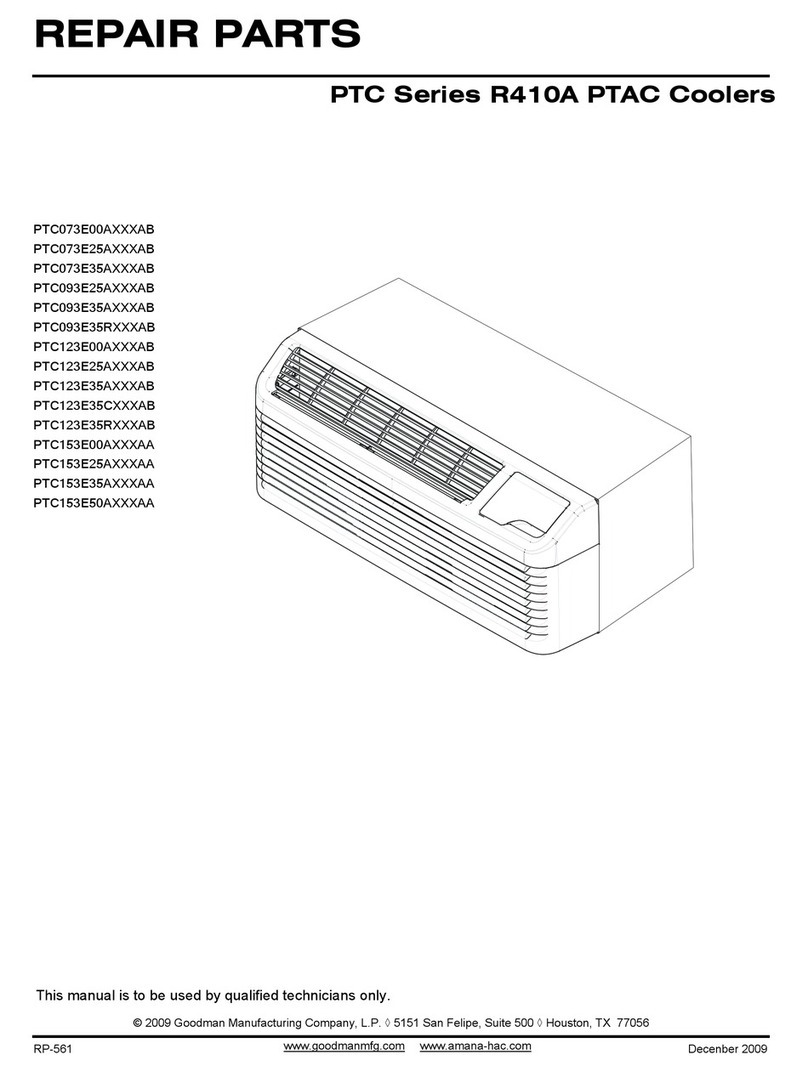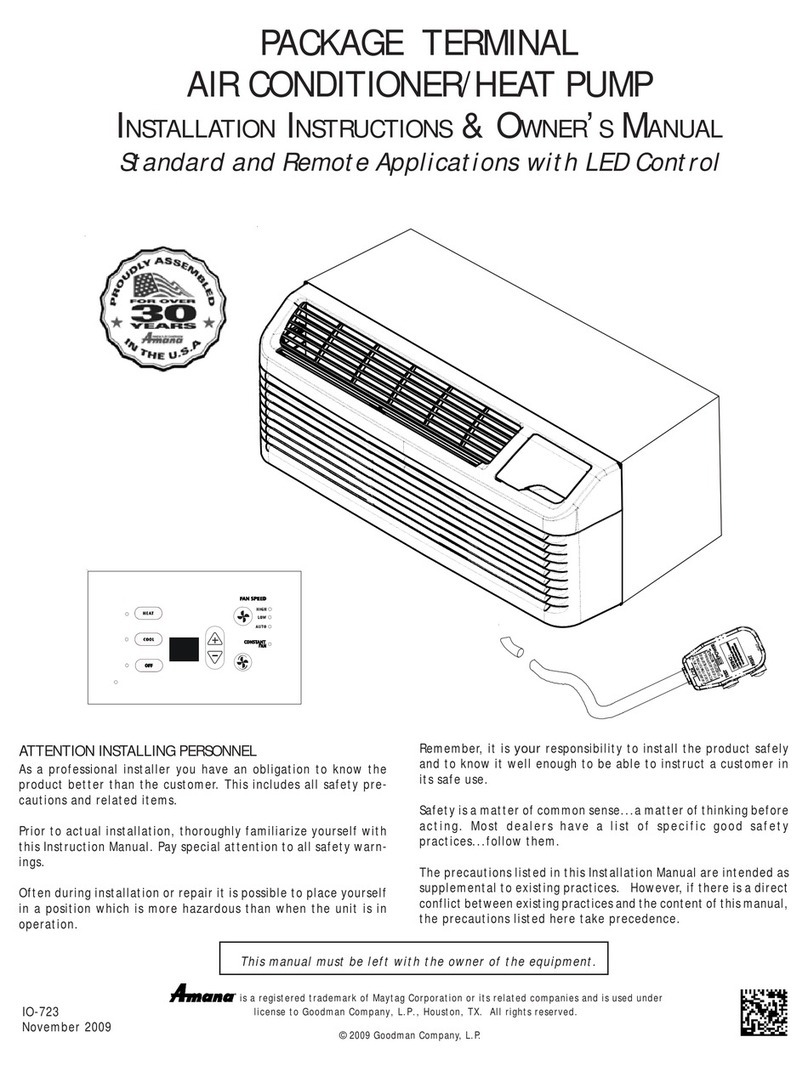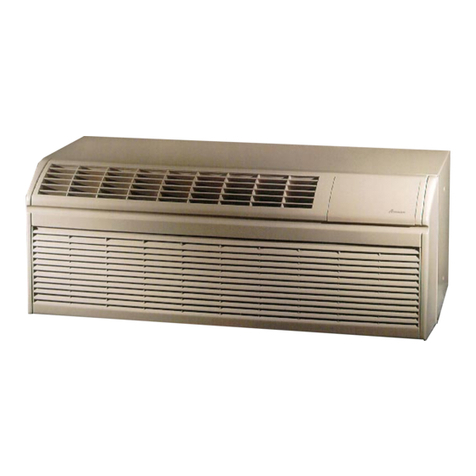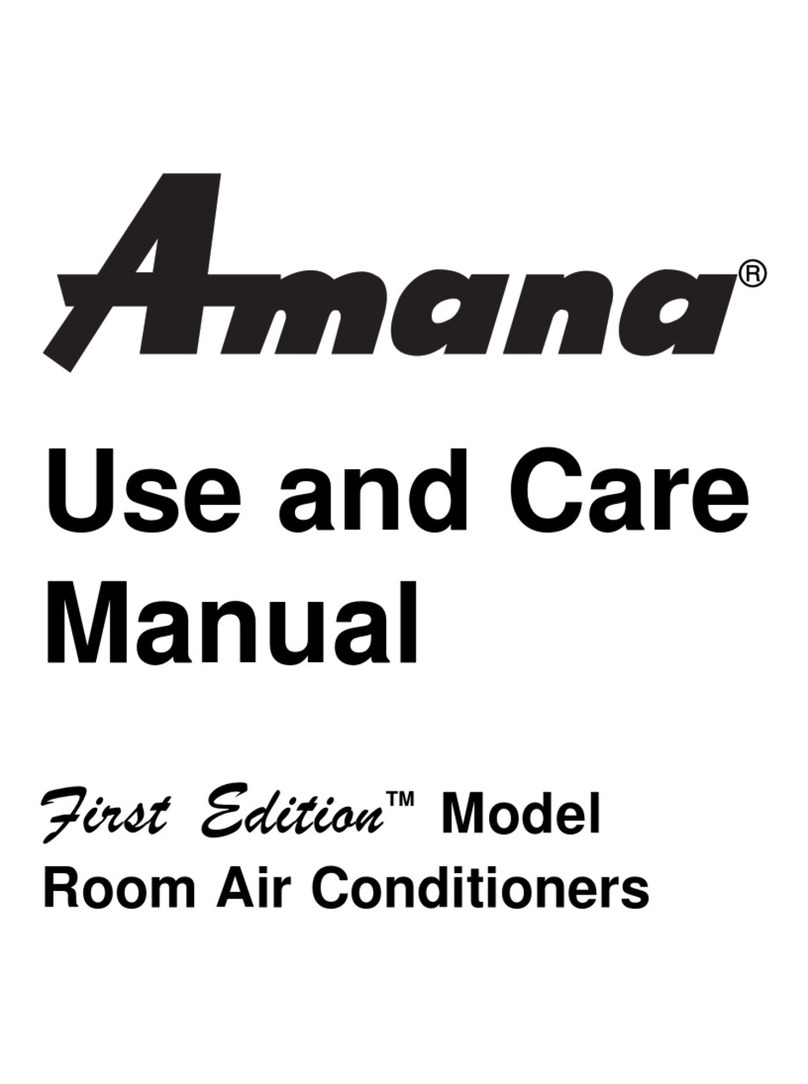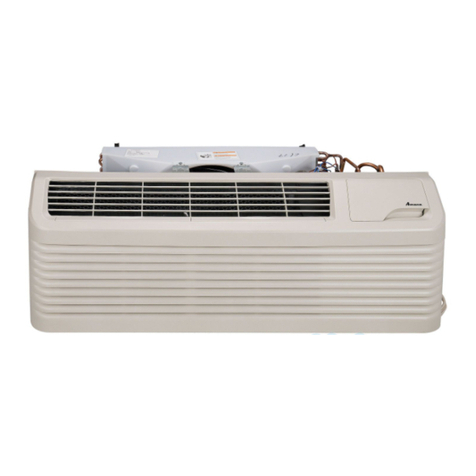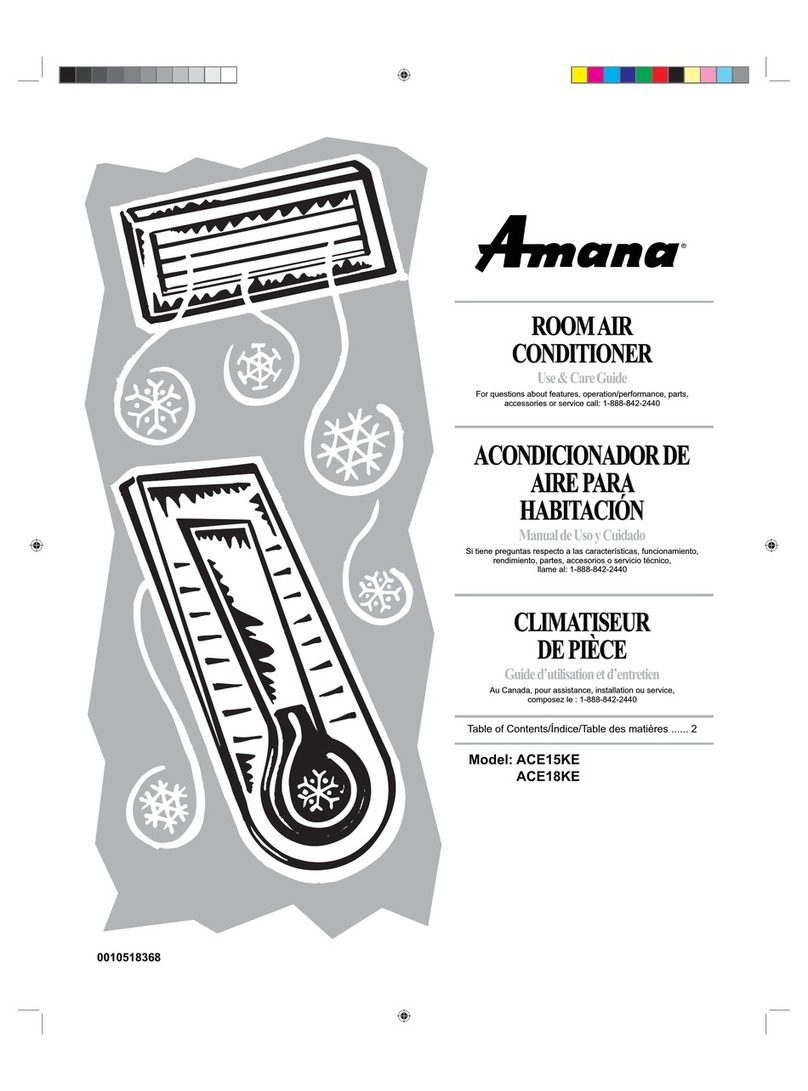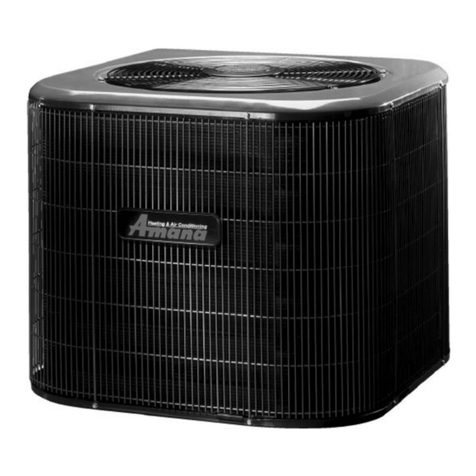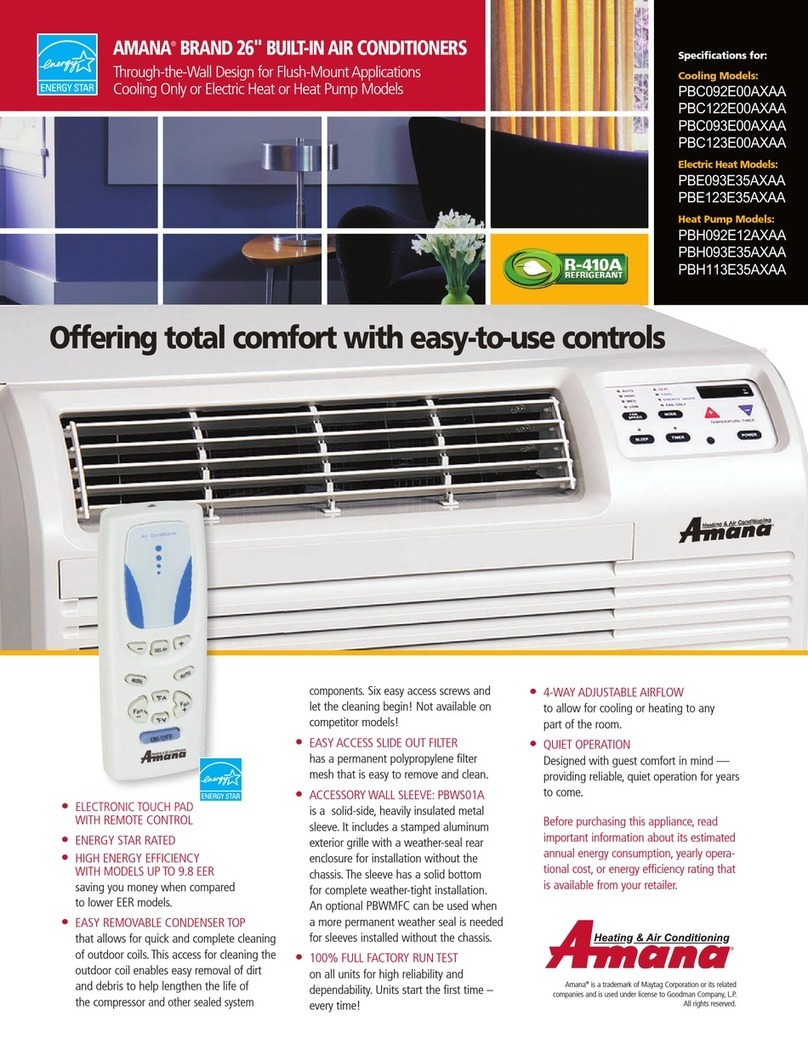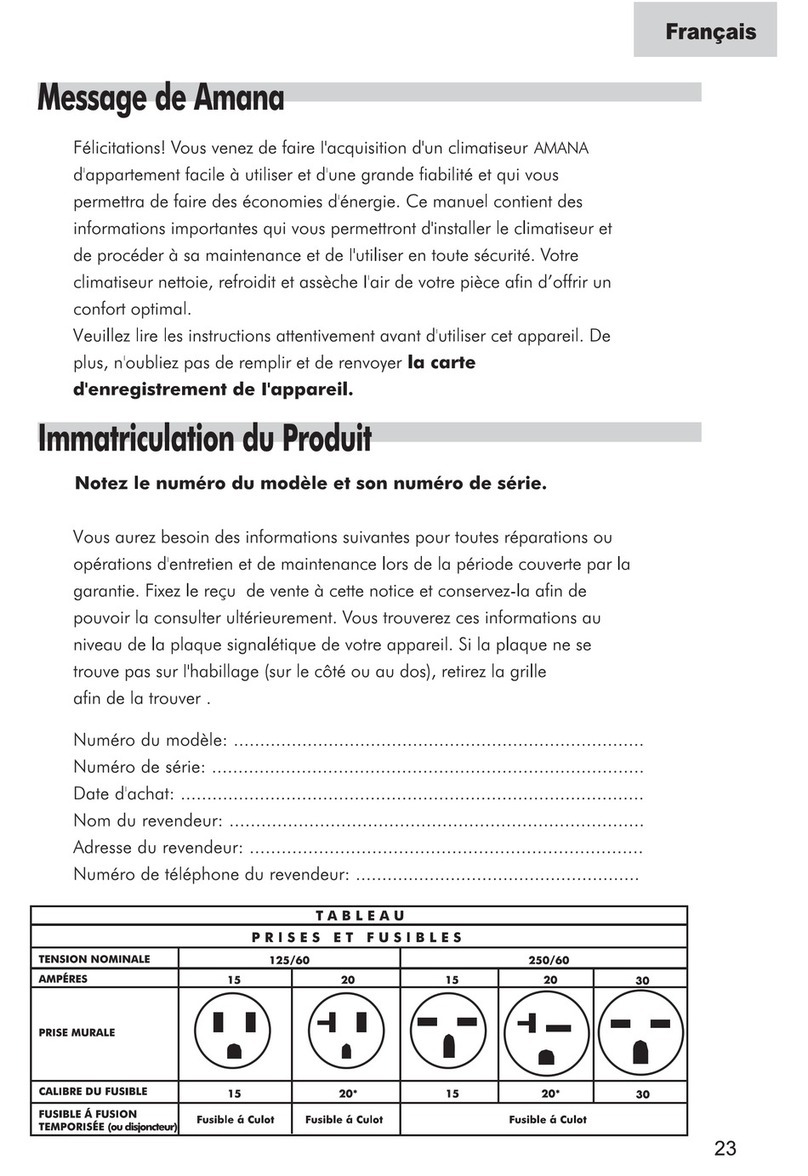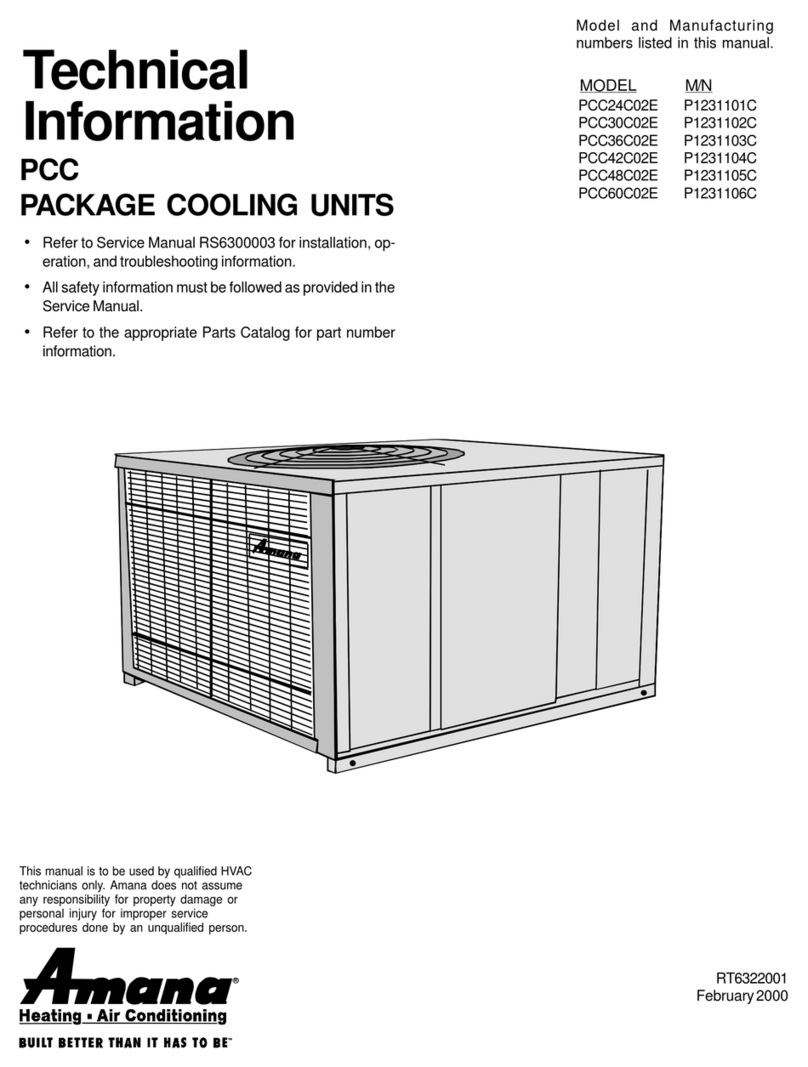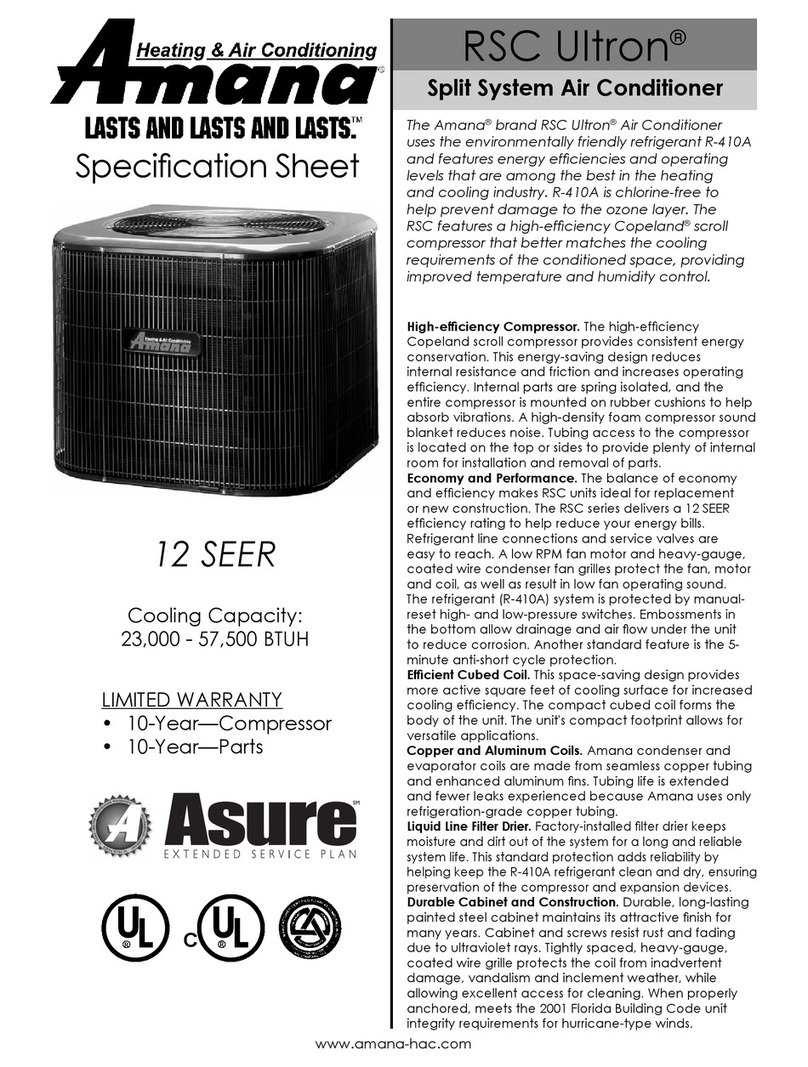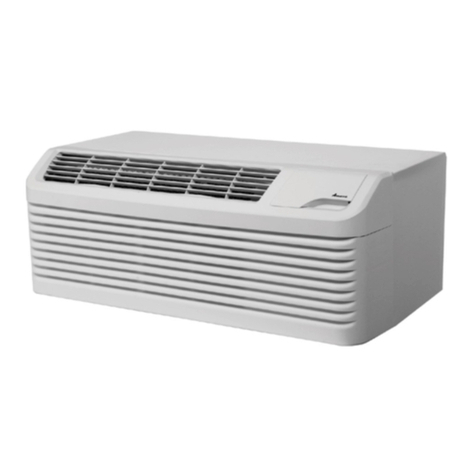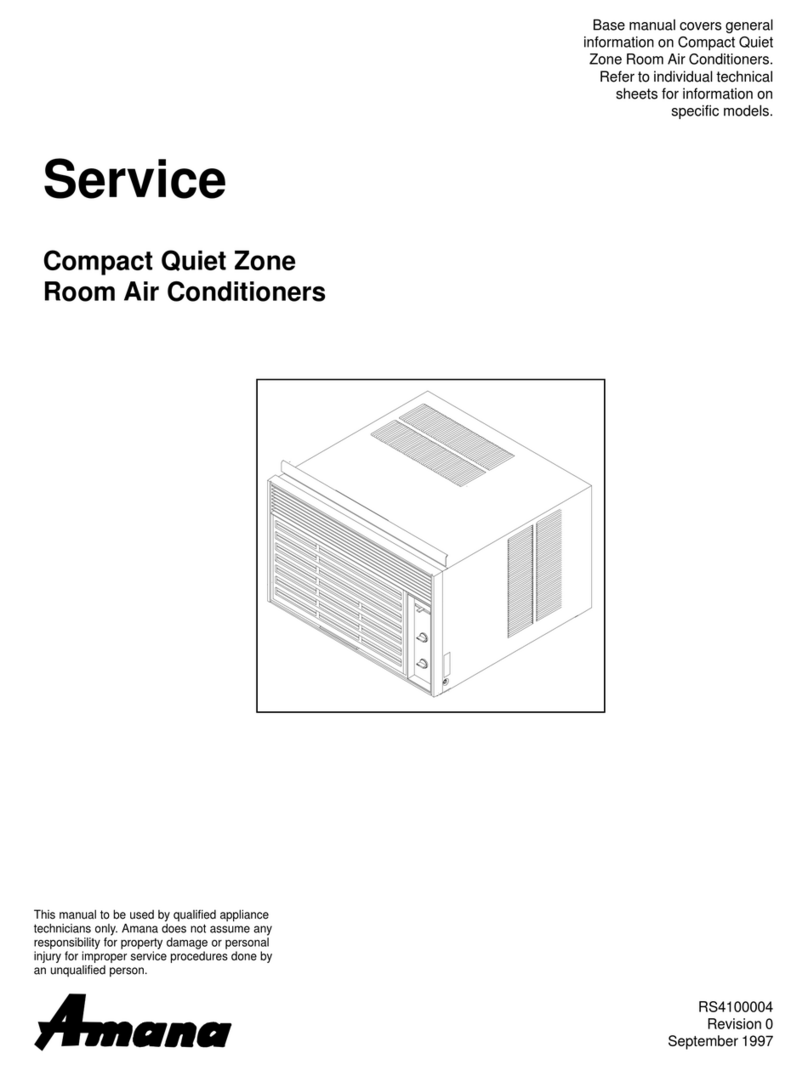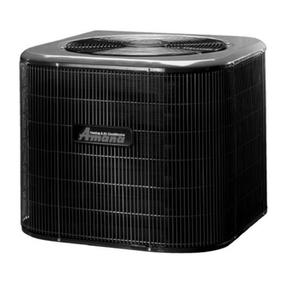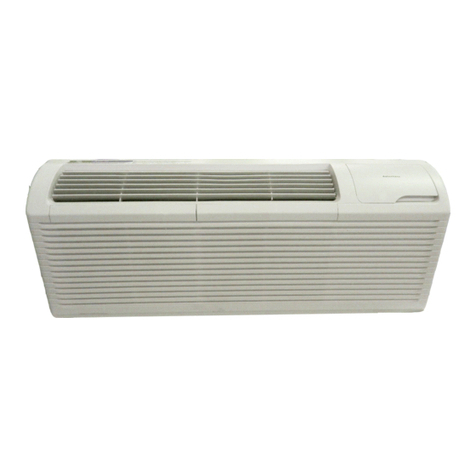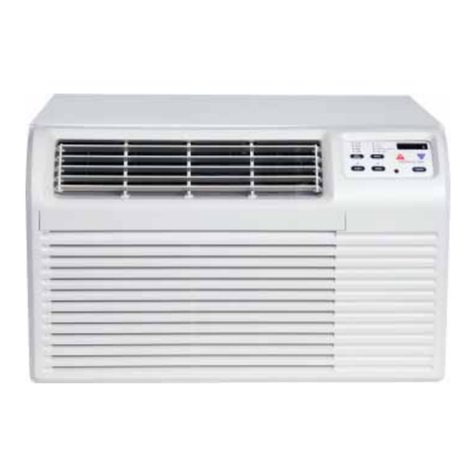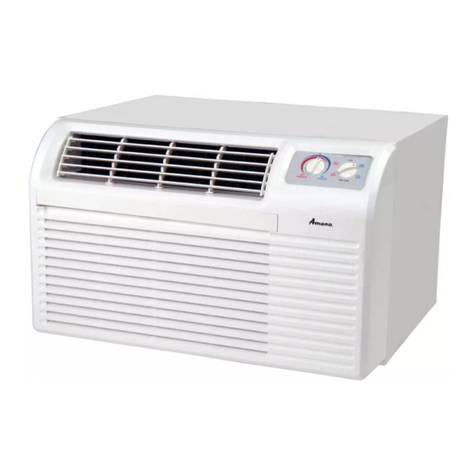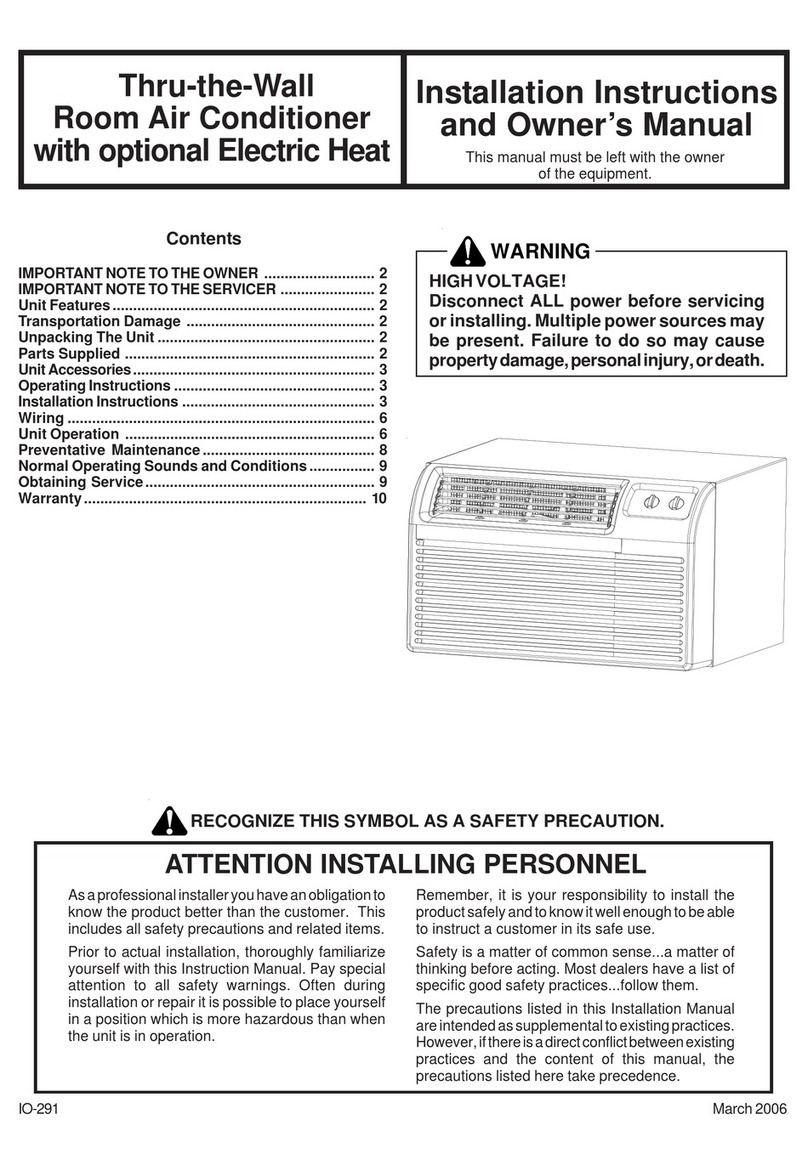
3
•AllowclearancesfromtheenclosureasshowninSpeci-
fication Sheet for fire protection, proper operation, and
service access. These clearances must be perma-
nentlymaintained.
•The combustion air inlet and flue outlet hoods on the
sideoftheunitmustneverbeobstructed.Ifused,donot
allow the economizer/manual fresh air damper/ motor-
ized fresh air damper to become blocked by snow or
debris. In some climates or locations, it may be neces-
sary to elevate the unit to avoid these problems.
•When the unit is heating, the temperature of the return
airenteringtheunitmustbebetween50°Fand100° F.
•Provisionsmustbemadeforadequatecombustionand
ventilation air in accordance with Section 5.3, Air for
Combustion and Ventilation, of the National Fuel Gas
Code,ANSIZ223.1, or Sections7.2,7.3or 7.4 ofCAN/
CGA B149 Installation Codes, or applicable provisions
of the local building codes.
GROUND LEVEL INSTALLATIONS ONLY:
•Whenthe unit isinstalled ontheground adjacentto the
building, a level concrete (or equal) base is recom-
mended.Prepare a basethe same physicalsize as the
unit or slightly larger and 3 inches thick.
•The base should also be located where no runoff of
water from higher ground can collect in the unit.
ROOFTOP INSTALLATIONS ONLY:
• To avoid possible personal injury or property damage,
theroofmusthavesufficientstructuralstrengthtocarry
the weight of the unit(s) and snow or water loads as
required by local codes.
• The unit may be installed directly on wood floors or on
Class A, Class B, or Class C roof covering material.
• Toavoidpossiblepersonalinjury,asafe,flatsurfacefor
service personnel should be provided.
NOTE: Refer to Specification Sheet shipped with the
unit or the unit Rating Plate for approved duct orienta-
tion, before using down discharge openings.
II. General Information
WARNING
Topreventdeath,personalinjuryorproperty
damage due to fire, explosions, smoke,
soot, condensation, electric shock or
carbonmonoxide,thisunitmustbeproperly
installed, repaired, operated and
maintained.
This unit is approved only for an outdoor installation.
To assure that your unit operates safely and efficiently, it
must be installed, operated, and maintained in accordance
with these installation and operating instructions, all local
buildingcodesandordinances,orintheirabsence,withthe
latesteditionoftheNationalFuelGasCode.(ANSIZ223.1)
and National Standard of Canada (CAN/CGA-2.3).
The heating and cooling capacities of the unit should be
greaterthanorequaltothedesignheatingandcoolingloads
of the area to be conditioned. The loads should be calcu-
lated by an approved method or in accordance with
A.S.H.R.A.E. Guide or Manual J - Load Calculations pub-
lished by the Air Conditioning Contractors of America.
Obtain from:
American National Standards Institute
1430Broadway
New York, NY 10018
TRANSPORTATION DAMAGE
All units are securely packed in shipping containers ap-
proved by the International Safe Transit Association. The
cartonshouldbecheckeduponarrivalforexternaldamage.
Ifdamageisfound,arequestforinspectionbycarrieragent
should be made in writing immediately.
The unit should be carefully inspected upon arrival for
damage and bolts or screws which may have loosened in
transit. In the event of damage, the consignee should:
1.Makenotationondeliveryreceiptofanyvisibledamage
to shipment or container.
2. Notify carrier promptly and request an inspection.
3.Incaseofconcealeddamage,carriershouldbenotified
as soon as possible-preferably within 5 days.
4. File the claim with the following supporting documents
within the 9 month statute of limitations.
a. Original Bill of Lading, certified copy, or indemnity
bond.
b. Original paid freight bill or indemnity in lieu thereof.
c. Original invoice or certified copy thereof, showing
trade and other discounts or reductions.
d. Copy of the inspection report issued by carrier repre-
sentativeatthetimedamageisreportedtothecarrier.
The carrier is responsible for making prompt inspec-
tion of damage and for a thorough investigation of
each claim. The distributor or manufacturer will not
accept claims from dealers for transportation dam-
age.
NOTE:Wheninspectingtheunitfortransportationdamage,
remove all packaging materials. Recycle or dispose the
packaging material according to local codes.
III. Rigging and Handling
CAUTION
Topreventpropertydamage,theunitshould
remain in an upright position during all
riggingandmovingoperations.Tofacilitate
lifting and moving when a crane is used,
place the unit in an adequate cable sling.
NOTE:RefertoSpecificationSheetshippedwiththeunitor
the unit Rating Plate for approved duct orientation, before
using down discharge openings.
Important: If using bottom discharge with roof curb, duct-
work should be attached to the curb prior to installing the
unit. Ductwork dimensions are shown in roof curb installa-
tion instructions.
